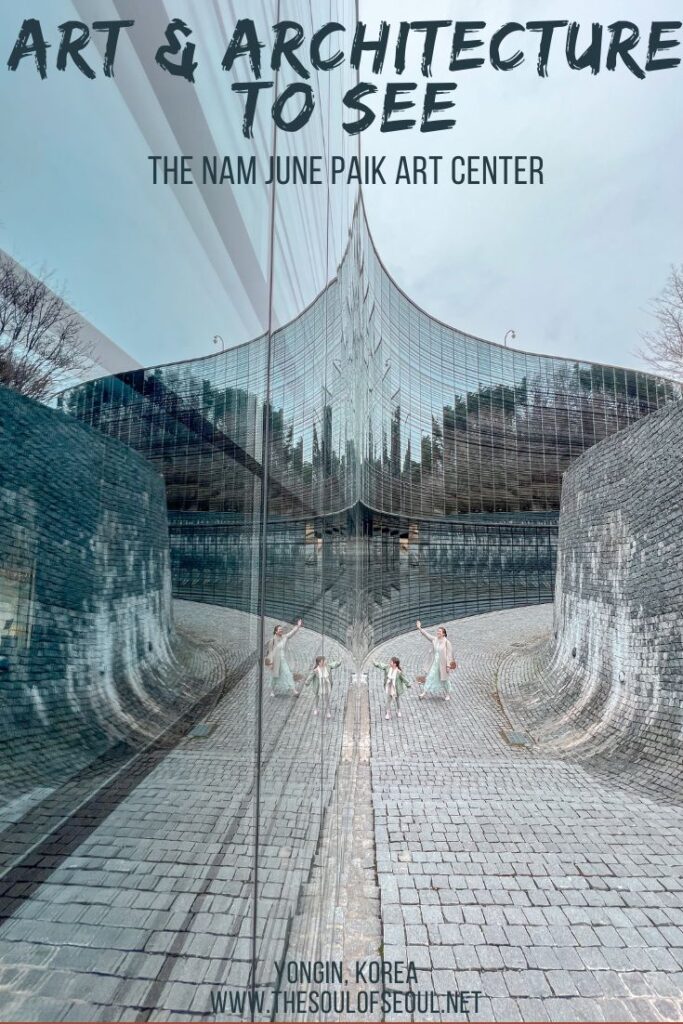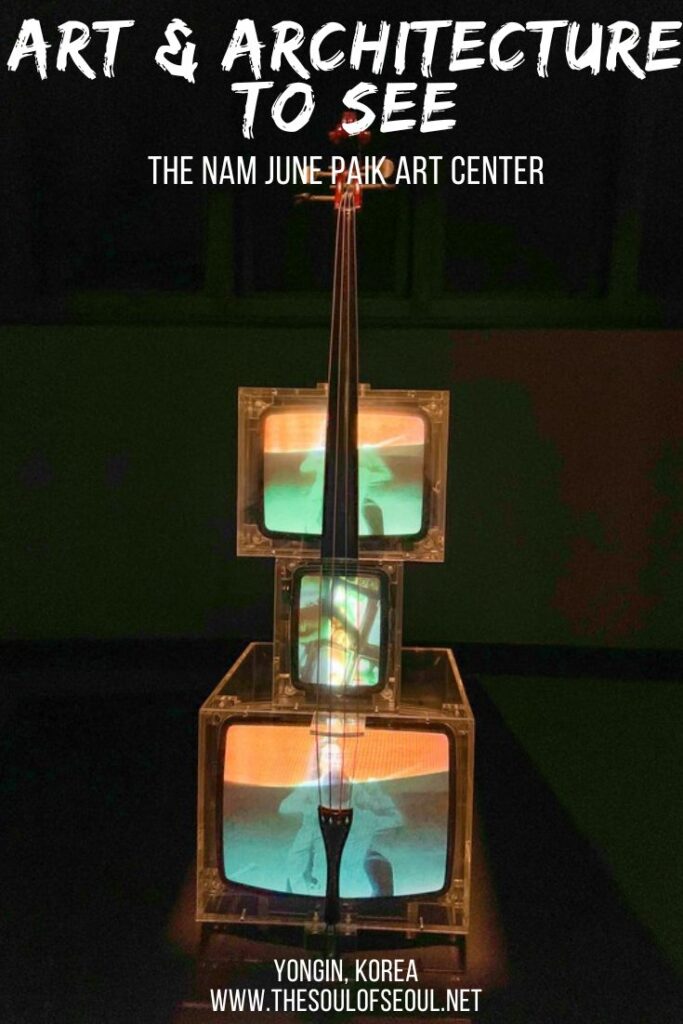Nam June Paik Art Center: The Art and Architecture Spot To See In Yongin
Last Updated on May 2, 2025
If you didn’t see one of Nam June Paik’s pieces before you came to Korea, you’ve certainly seen one of his pieces since arriving. Once you’re aware of his style and aesthetic, you’ll notice one of his pieces in almost every museum in the country. If you want to learn more about one of Korea’s most famous artists, a pioneering video artist, you definitely need to visit the Nam June Paik Art Center (백남준아트센터) in Yongin, Korea.
Established to revive the generosity, criticality, and interdisciplinarity characteristic of his work and life, the center makes for a fun and artistic place to go south of Seoul, Korea. You can learn why you should truly appreciate this world-renowned modern artist.

Plan a trip to Nam June Paik Art Center:
- How To Get There
- Basic Information
- Who was Nam June Paik
- What to know about Nam June Paik Art Center
- What does the logo mean?
- The exhibitions
- Programs
- What To See Nearby
(This post contains affiliate links, which means I receive a certain percentage of a sale if you purchase after clicking at no cost to you. Thank you for your support.)
How To Get There
Address: 10 Paiknamjune-ro, Giheung-gu, Yongin-si, Gyeonggi-do (경기도 용인시 기흥구
백남준로 10)
Directions: From Giheung Station, go out of exit 5 and walk along a stream for about 15 minutes to find the art center. Or, go out of exit 6 and take local bus 38-1, 51, or 54 to the art center. You can also exit from Sanggal Station, exit 4, and walk for about 10 minutes to the center. Or go out of exit 2 to find the same local buses to take you there.
Basic Information
Hours: 10:00am ~ 6:00pm
Days: Closed on Mondays, January 1st, Seollal and Chuseok
Admission: Free (Some fees may be required for special exhibitions)
Website: www.njp.ggcf.kr
Who was Nam June Paik
Born in Seoul in 1932, Paik is regarded as “one of the forerunners of a new breed of artists who are scientists, philosophers, and engineers at the same time”. If you live in Korea, you’ll see his art all over the place and begin to quickly and easily recognize his media-based pieces. He spent his middle school days in Seoul and Hong Kong, and his high school days in Kamakura, Japan.
In college, he studied aesthetics at the University of Tokyo. In 1956, he moved to Germany and studied European philosophy and modern music and began to work actively in the contemporary avant-garde scene. It was this period when he began to carve out his identity as an artist by doing radical performances.
He then began making new media art and gained momentum by his first solo show Exposition of Music-Electronic Television where he presented televisions with inner circuits modified and manipulated as a work of art.

In 1964, Paik migrated to the US where he focused on developing his video art and produced video images combining them with sculptures and installations, and created a video synthesizer, a machine to process images. In the 1980s he realized a series of global projects including Good Morning, Mr. Orwell to tear down the barriers between avant-garde art and popular culture by satellite TV technology. He won the Glolden Lion at the 1993 Venice Biennale for his work on the theme of artist as nomad in the German Pavilion.
Nam June Paik was a pioneering media artist who worked with various technologies in experimental ways and focused on better ways of global communication through art.

What to know about the Nam June Paik Art Center
The art center in Nam June Paik’s name was opened to the public in 2008 and aspires to share and inspire through Paik’s work and life. The building was designed by German architect Kirsten Schemel together with Marina Stankovic in KSMS Schemel Stankovic Architects. You definitely need to not only walk inside the museum, but also walk around the building itself.
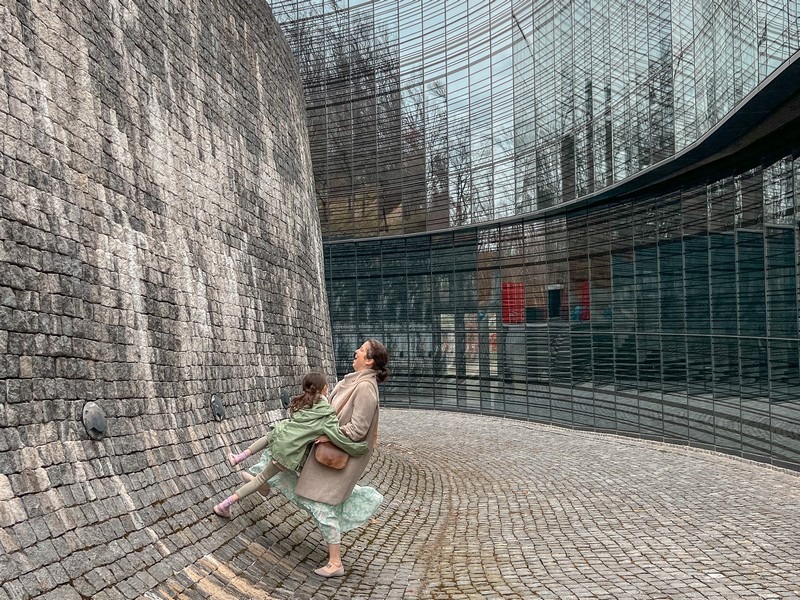
The curving exterior of the building takes the form of a grand piano, which makes a frequent appearance in Paik’s works, and its shape also refer to the letter “P”, the first letter of Paik’s surname. While you might not notice this shape as you walk around, you would from above. The exterior is still very fun to walk around.
Characteristic of the museum is its screen façade consisting of several layers of reflective and partly printed glass. While you’re taking pictures of your reflection, just remember the people inside can see you in some parts.
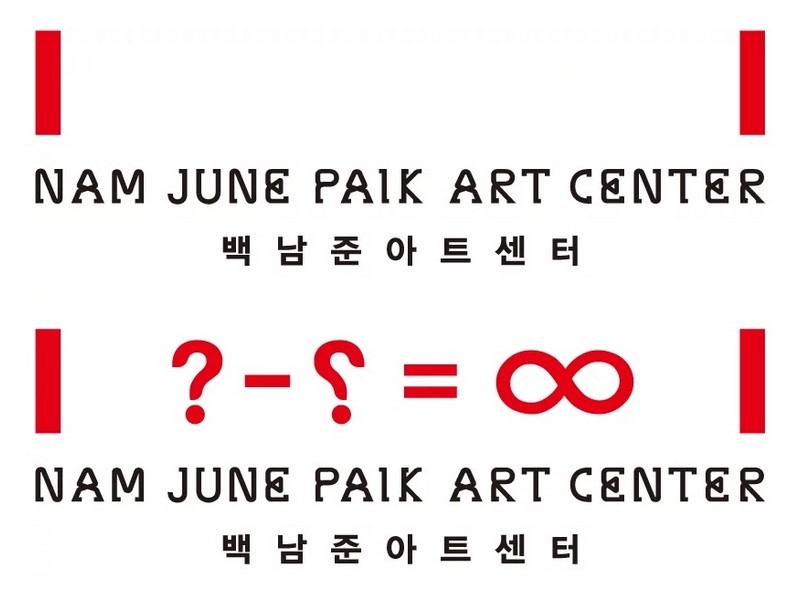
What does the logo mean?
The mathematical symbols used in the main logo of the Nam June Paik Art Center are derived from the numerical expression that Paik used in a work commemorating his 54th birthday in 1985. They represent Paik’s rich imagination and sense of humor.
The logo image shows that when a question is reversed and turned into a new question, limitless transformations and circulations take place. The NJP Art Center uses this as a basis for their work and aims to be an experimental space that does not stop to question what is already established.
The exhibitions
The exhibitions at Nam June Paik Art Center aren’t set up in any order of chronology or popularity but instead invite visitors to make up their own minds about each piece’s significance to them. The exhibitions are created in an effort to bring about new discourse, breaking away from any modern notion of art and opening up the possibilities within communication and sharing of information within the media age.
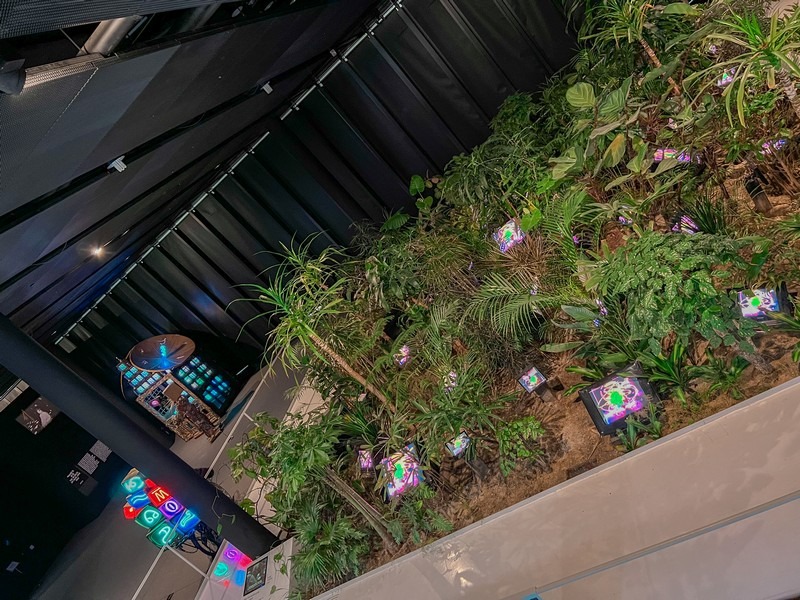
The Nam June Paik Art Center has 248 video installations as well as drawings by Paik and other contemporary artists. There are an additional 2,285 video works and other primary materials. The exhibitions are changed throughout the year so be sure to see what’s going on and if there’s something new to see and derive your own meaning from.
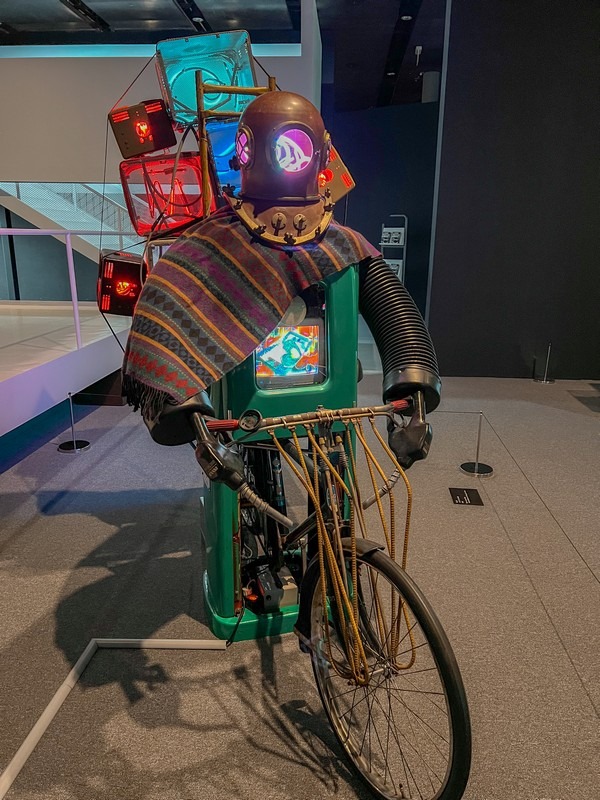
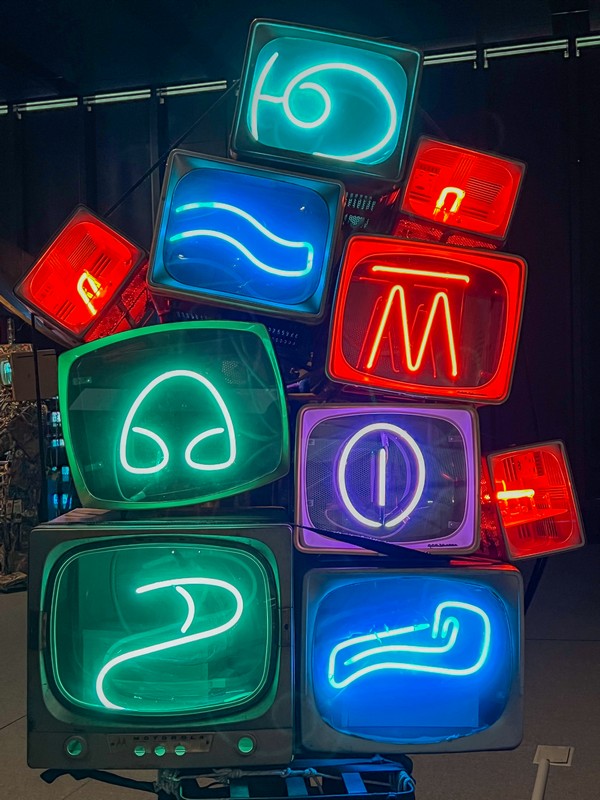

Programs
There are a number of programs that take place at the art center. Check out their website for specific programs coming up soon.

- Programs for Students | The center offers educational programs where elementary, middle, and high school students as well as special education students can appreciate and experience creative art presented at exhibitions. Several other hands-on programs and lectures to help students to explore their future careers have been provided.
- Programs for Families with Children | The Nam June Paik Art Center provides a variety of hands-on programs that help families with children approach Paik’s art more easily.
- Programs for Young Adults : | The art center offers educational programs for young adults to experience art with the help of artists and art specialists.
- Programs for General Public and Art Specialists | A series of lecture programs, which will help deepen the understanding of the artist Nam June Paik and modern art, are offered to both the general public and art specialists.
- Training Programs for Volunteers | The center runs training programs for volunteers and applicants for volunteering work.
- Cultural Events | A variety of cultural events such as performances and hands-on programs are available.
What To See Nearby
Gyeonggi-do Museum (경기도박물관)
The Nam June Paik Art Center is surrounded in the back by a park which is also connected to the Gyeonggi-do Museum and Gyeonggi-do Children’s Museum. See relics from the Goryeo period and Joseon Dynasty. There are some really interesting stories here regarding Gyeonggi-do’s history which often gets lumped into Seoul’s growth, but this museum aims to share more about Gyeonggi’s own identity.
They also share more about multiculturalism in Goryeo times and share that 15% of the population during the Goryeo Dynasty was foreign. They showcase an appreciation for the diverse and inclusive cultures that came together during that time interestingly.
- Address: 6 Sanggal-ro, Giheung-gu, Yongin-si, Gyeonggi-do (경기도 용인시 기흥구 상갈로 6)
- Admission: FREE
- Hours: 10:00am ~ 6:00pm
- Days: Closed Mondays, January 1st, Lunar New Year’s Day and Chuseok
- Website: https://musenet.ggcf.kr/
Gyeonggi-do Children’s Museum (경기도어린이박물관)
If you’re taking kids and want a bit of something for them and a bit of something for you with the Nam June Paik Art Center, then definitely head to the Gyeonggi-do Children’s Museum. Similar to the focus at the Gyeonggi-do Museum, the permanent exhibitions here are designed to share information about multiculturalism and community.
- Address: 6 Sanggal-ro, Giheung-gu, Yongin-si, Gyeonggi-do (경기도 용인시 기흥구 상갈로 6)
- Admission: W4,000
- Hours: Reservations are required. There are two entries per day: 10:00am ~ 1:30pm and 2:00pm ~ 5:30pm
- Days: Closed Mondays, January 1st, Lunar New Year’s Day and Chuseok
- Website: https://gcm.ggcf.kr/
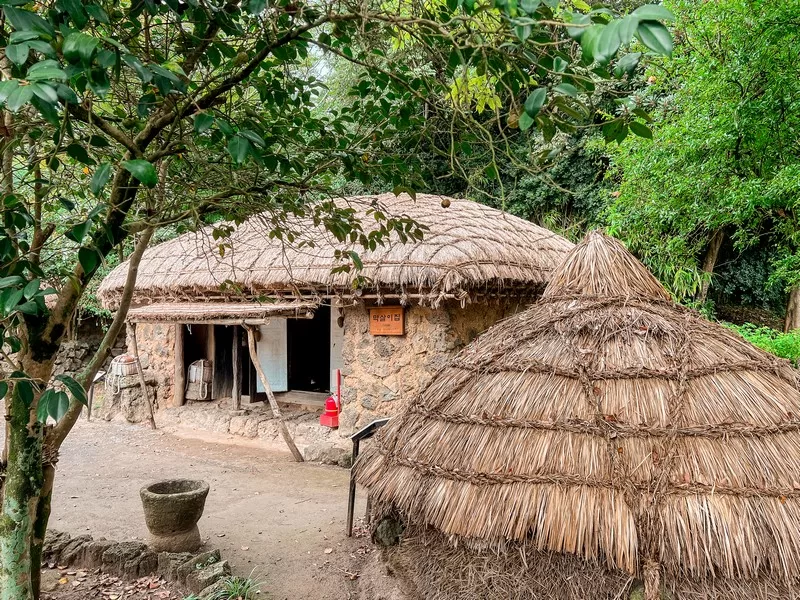
Korean Folk Village
Folk villages around the country are beautiful places to spend a day and learn about Korean history and tradition. The Korean Folk Village in Yongin represents a village from the Joseon Dynasty and there are various cultural classes and experiences to have throughout the year. There are performances throughout the year, and on holidays there are special events too.
- More Info: www.koreanfolk.co.kr
- Admission: Adults: W25,000; Teenagers: W22,000; Children: W20,000
- Tour Option: If you don’t want to worry about the transportation, hop on the half day tour with Klook.
- Address: 90 Minsokchon-ro, Giheung-gu, Yongin-si, Gyeonggi-do (경기도 용인시 기흥구 민속촌로 90 (보라동))
- Hours: Every day 10:00am ~ 6:00pm
- How To Get There: Near Sungnyemun Gate, catch bus 4101 which goes directly to the Korean Folk Village.
Did you like this post? Pin IT!
